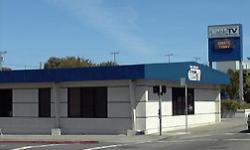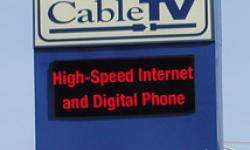San Bruno, California, United States, as most other cities, first received feelers from potential cable television franchisees beginning in 1967. The City's initial response was to determine whether there was a need for a cable television system. A survey taken showed that many residents experienced good reception on some of the local broadcast television stations, but for a variety of reasons did not receive acceptable quality on most of the stations.
A market study was commissioned to further identify the community's interest. Just over 10,000 survey postcards were mailed to residences. Thirty seven (37%) percent of the postcards were returned. Results indicated that sixty (60%) percent would subscribe to a cable service if available and sixty four (64%) percent of those favored a city project.
In April of 1971, Jerrold Electronics was selected to design and build the first 46.7 miles of San Bruno's cable system. The 270 MHz system was completed on October 18, 1971. The original investment for the headend and first phase of construction was $565,000. During the first year the system grew to 2,200 subscribers, and construction planning for future expansion was started. A second phase of 15.3 miles and a third phase of 13.4 miles were completed by June of 1975. Cash reserves generated from operations financed each new phase of construction.
San Bruno, California's twelve (12) channel service comprising of only local broadcast stations was offered to subscribers for $4.75 per month. In 1977, the twelve (12) channel service was expanded to nineteen (19) channels. The expanded service also introduced the converter or set-top box to the system. In 1978, Home Box Office was added to the San Bruno Cable channel line-up. The addition resulted in an increase in gross revenues by fifty (50%) percent. Turner Broadcasting's WTBS from Atlanta, USA Network, ESPN and C-SPAN were added to the channel menu shortly thereafter. The monthly rate for basic service was $9.00 and the premium service rates for HBO and Showtime was $10.00 per service.
By 1983, the twenty-four (24) channel system had reached its full capacity. At the 12-year mark, plans to expand channel capacity had begun to meet the growing demand for satellite delivered programming. An upgrade to a 450 MHz infrastructure was undertaken and completed in late 1985. The new system was fully addressable and capable of delivering 60 channels of programming. Pay-Per-View (PPV) service was added as well. Cash reserves generated from operations financed the cable system upgrade valued at more than 2.2 million dollars.
San Bruno Cable generates just over $9 million in revenues annually.



San Bruno Cable reviews
Login to comment